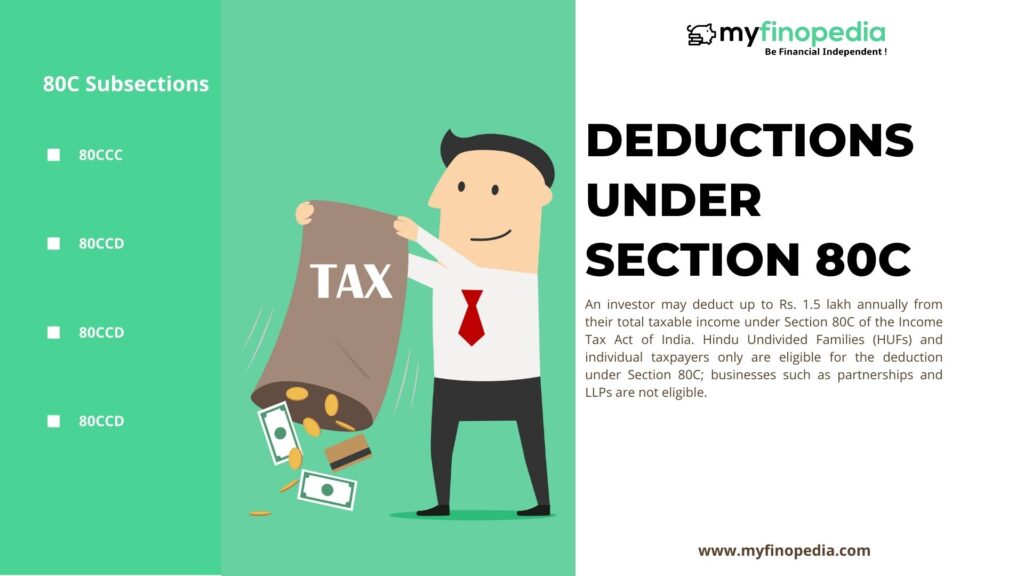There are a few methods to reduce taxes or receive a refund. Commonly utilised tax-saving investing choices include PPF, EPF, and others. Tax savings depend on the type of tax advantage claimed.
Section 80C of the Income Tax Act provides for the reduction of taxable income through tax-saving investments or the incurring of qualified costs. With the exception of an extra deduction of Rs 50,000, the overall ceiling for deductibility, including subsections, is Rs 1.5 lakh. Section 80C contains the subsections 80CCC, 80CCD (1), 80CCD (1b), and 80CCD (2). It is important to keep in mind that the overall limit Inc One of the most beloved and well-liked sections among taxpayers is Section 80C because it gives them the opportunity to reduce their taxable income by making tax-saving investments or paying eligible expenses. As a result, the Indian Finance Ministry publishes a yearly budget that lists the proper and improper ways to deduct IT expenses. We’ll talk about tax exemption under sections 80C, 80CCC, 80CCD, and 80D in this post: –
Meaning & Benefits of Section 80C:-
A. Definition of Section 80C:- An investor may deduct up to Rs. 1.5 lakh annually from their total taxable income under Section 80C of the Income Tax Act of India. Hindu Undivided Families (HUFs) and individual taxpayers only are eligible for the deduction under Section 80C; businesses such as partnerships and LLPs are not eligible.
B. Who is eligible for this deduction?
Section 80C of the Income Tax Act of 1961 allows for the tax exemption of Employee Provident Fund (EPF) returns, including interest for Employees who have worked for the company for at least five years. Individuals can claim tax exemptions under Section 80C for voluntary donations they make to their EPF accounts. A tax deduction is available for hybrid retirement mutual funds under Section 80C that are furthermore eligible for an extra five-year lock in term. A fixed deposit account that qualifies for a tax deduction under Section 80C of the Income Tax Act of 1961 is a tax-saving fixed deposit (FD) account.
C. How much can be deducted under Section 80C?
Section 80C deductions on a range of assets allow you to deduct up to Rs. 1.5 lakh per year from your taxable income. Payments paid to some government-sponsored programs, such as the National Pension System, the Atal Pension Yojana, etc., are covered under subsection 80CCD(1). Investments in NPS up to Rs. 50,000 are eligible for this section’s exemption under Subsection 80CCD (1B). Employer contributions to NPS (up to 10%, consisting of basic pay and dearness allowance, if any), are exempt under Subsection 80CCD(2) in this group.
D. What expenses can be claimed as deductions?
According to Section 80C of the Income Tax Act, people may deduct money paid for things like life insurance, fixed deposits, superannuation and provident funds, tuition, and the building or buying of residential properties. Aside from that, premium payments paid for life insurance plans, the cost of educating children, principle on a mortgage repayment, For real estate, there are registration fees and stamp duty.
E. Tax differences between section 80CCC and other sections:-
The well-known advantage of Section 80C over other sections is that the taxpayers can reduce their taxable income by making tax-saving investments or paying eligible expenses under Section 80C. The maximum yearly deduction from the gross income of a taxpayer is Rs.1.5 lakh. This discount is available to both individuals and HUFs.






